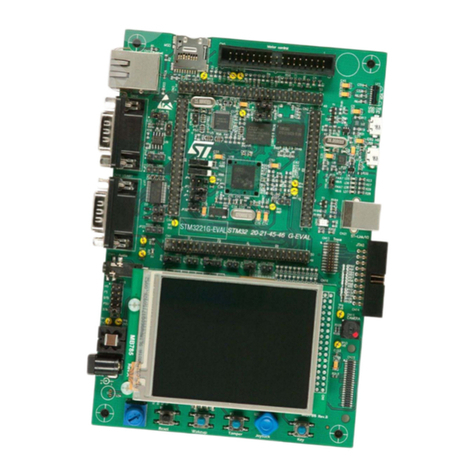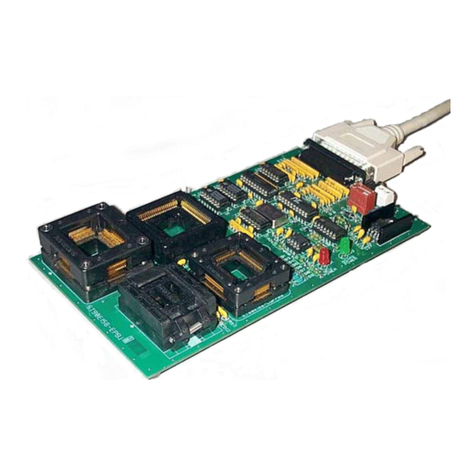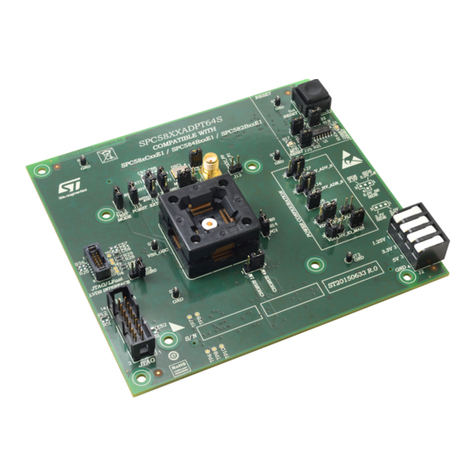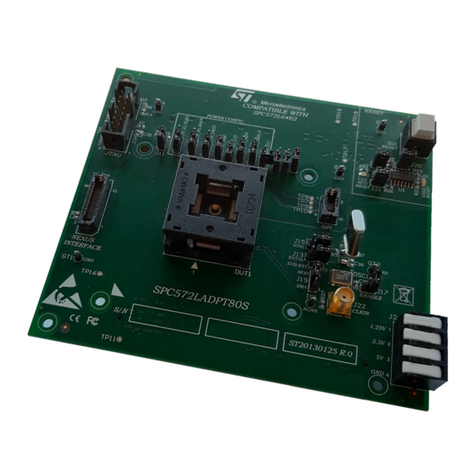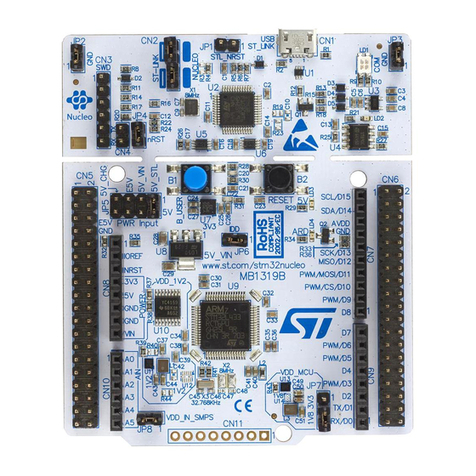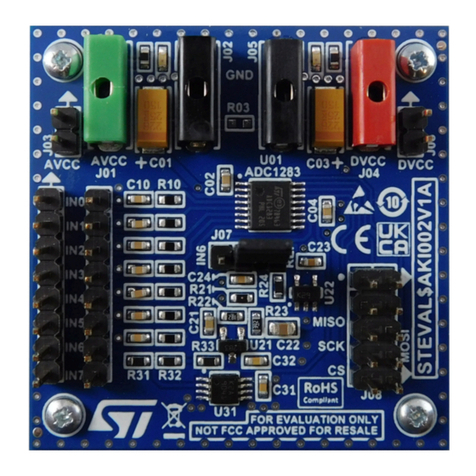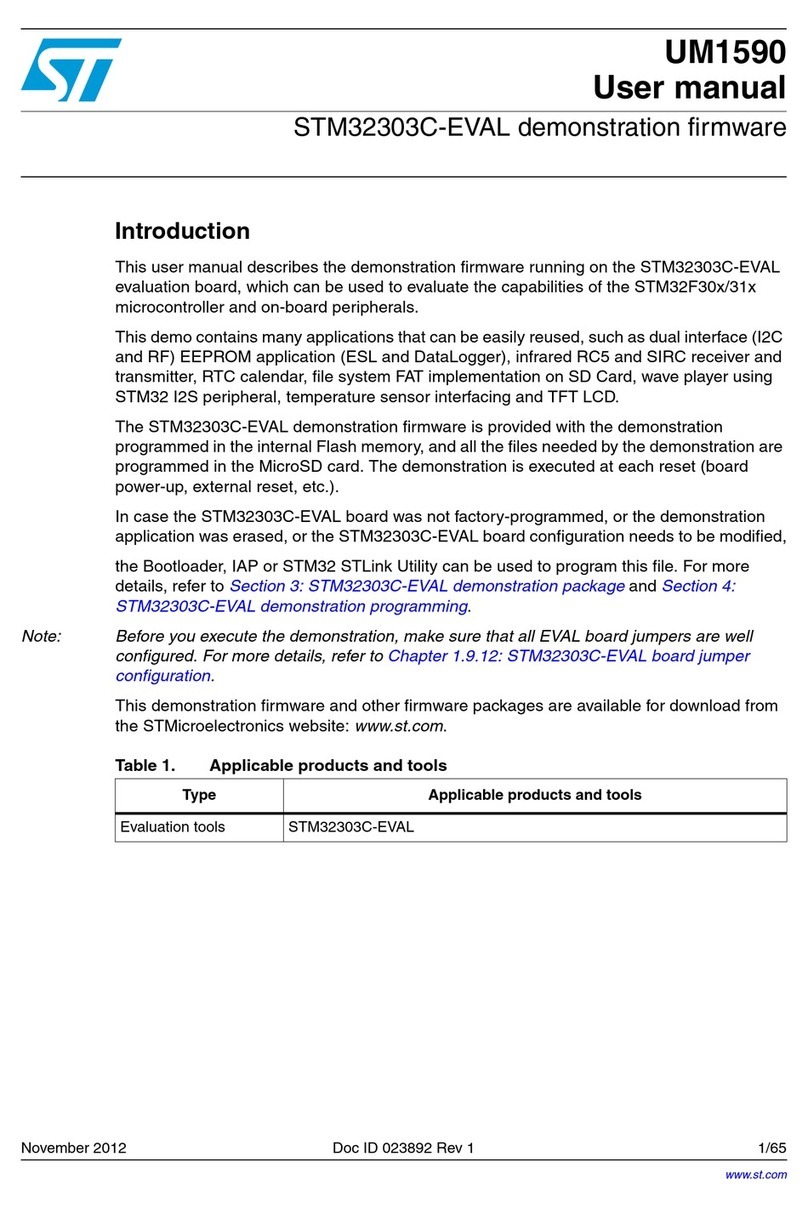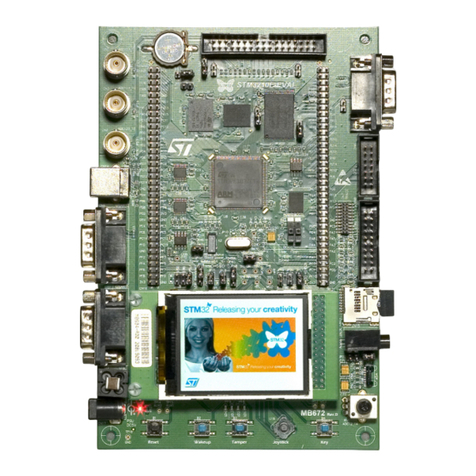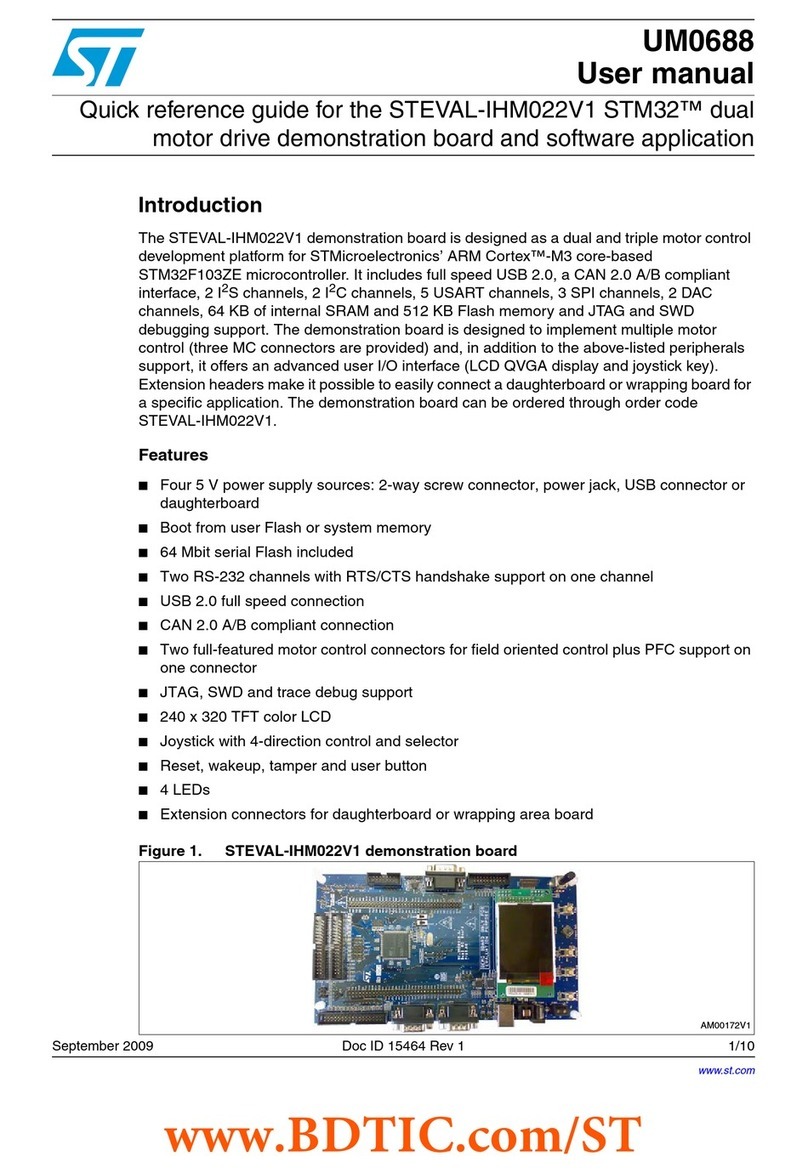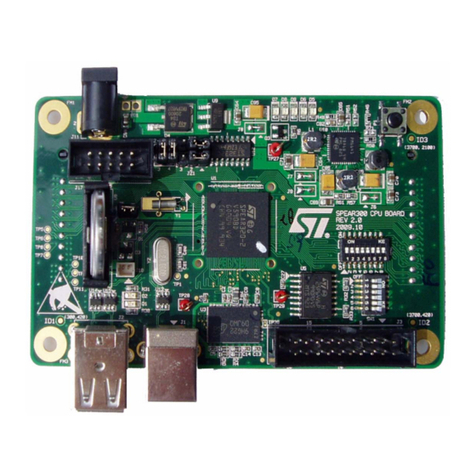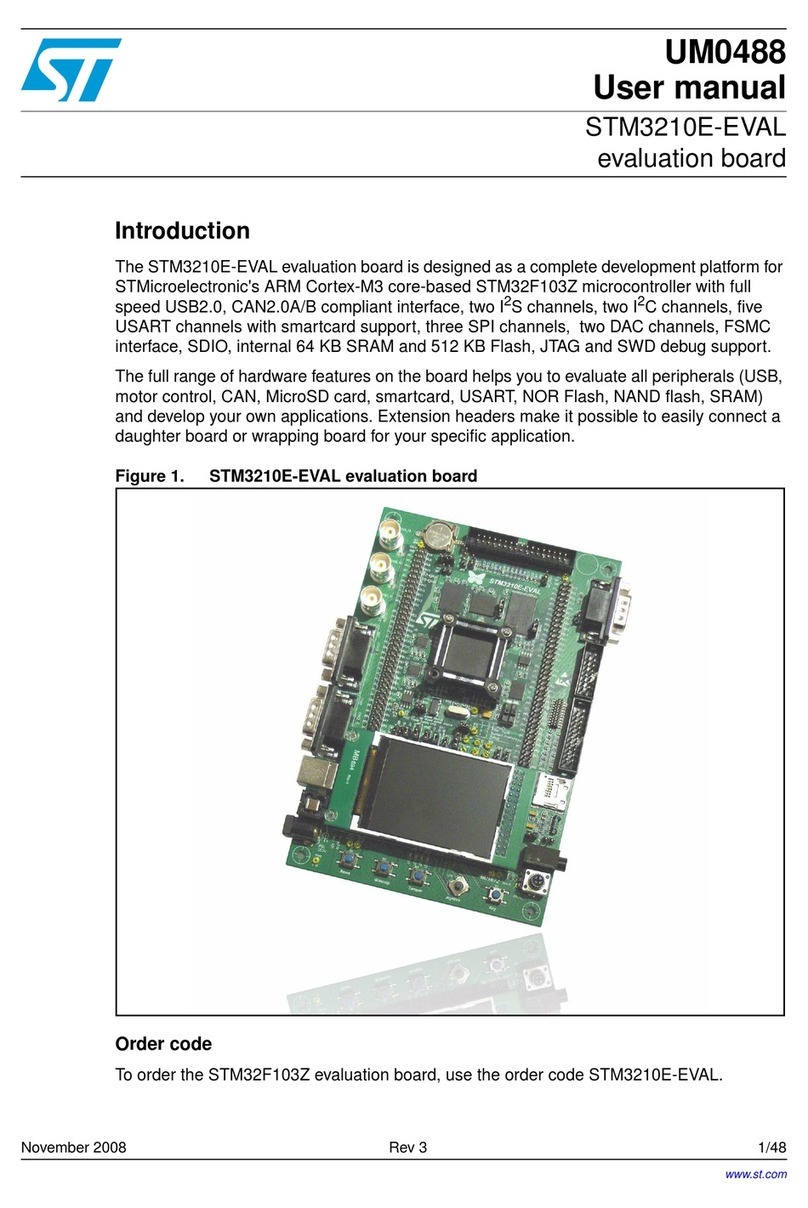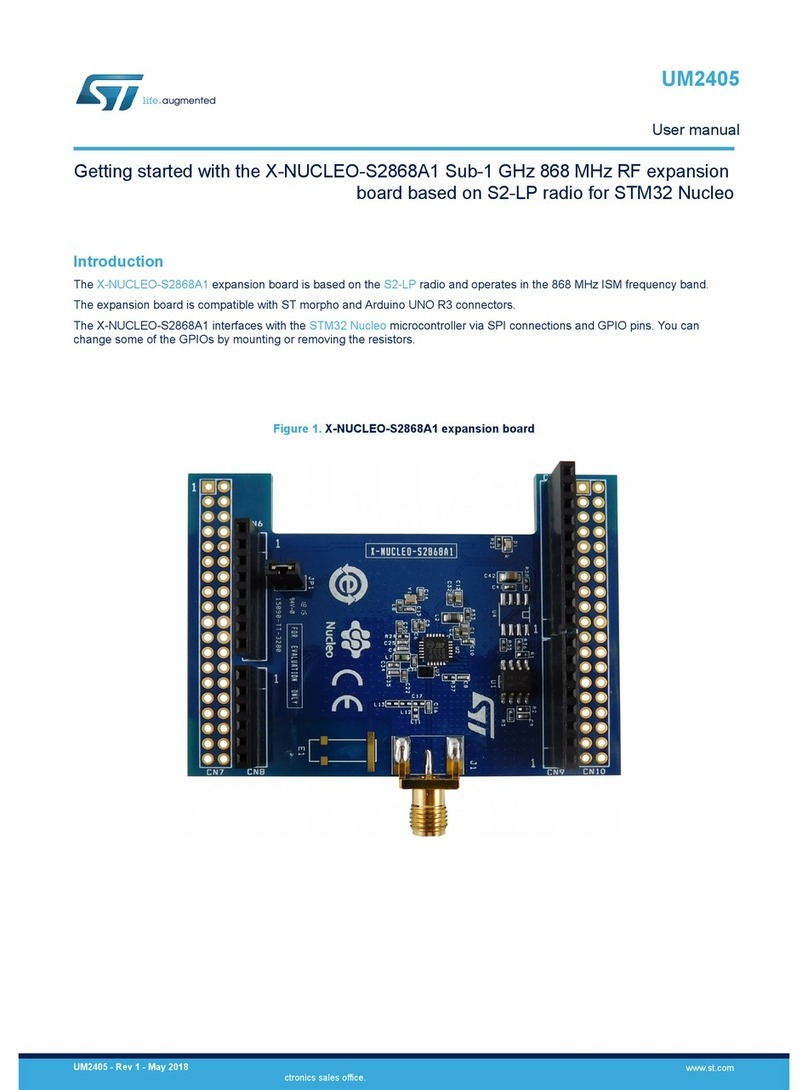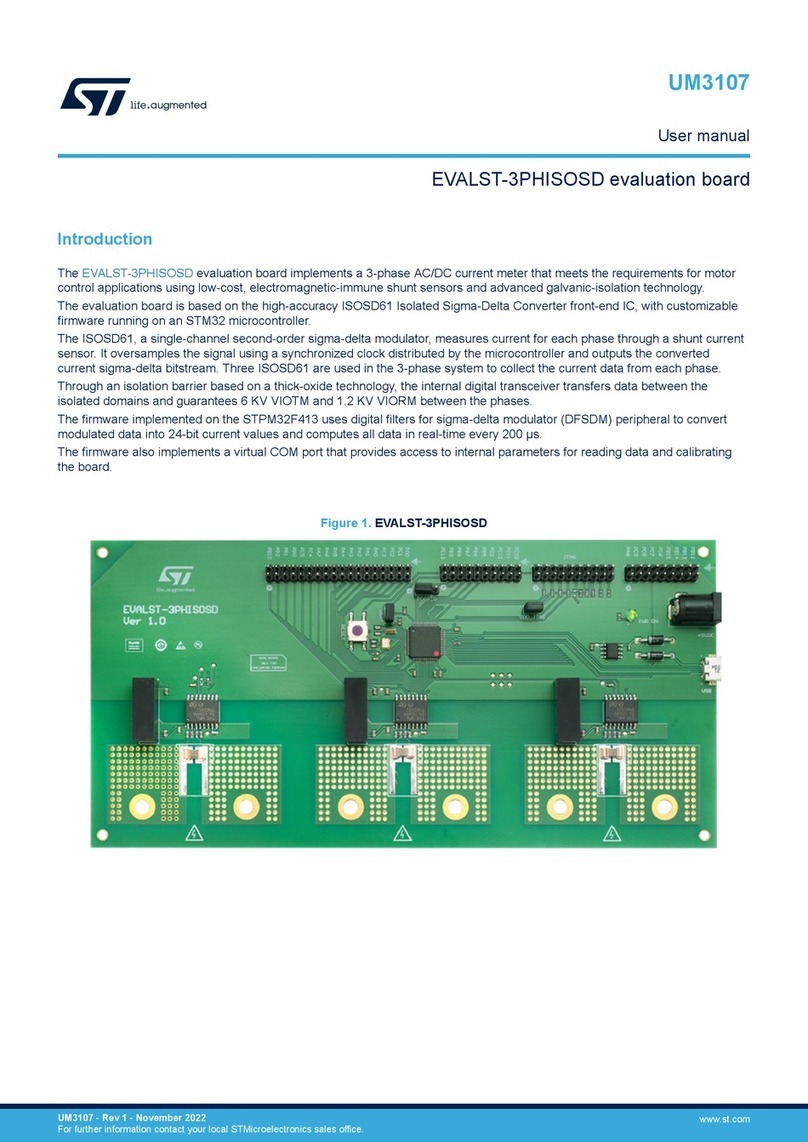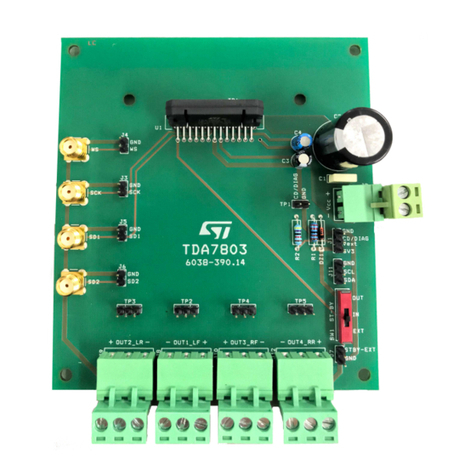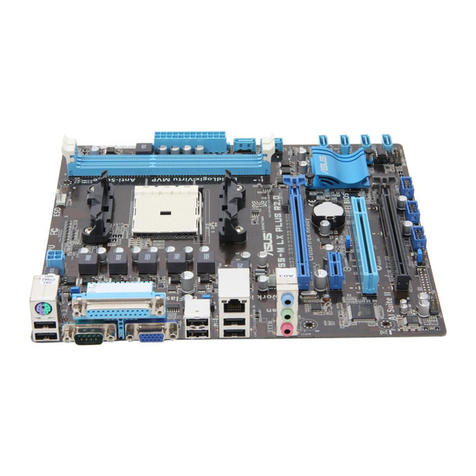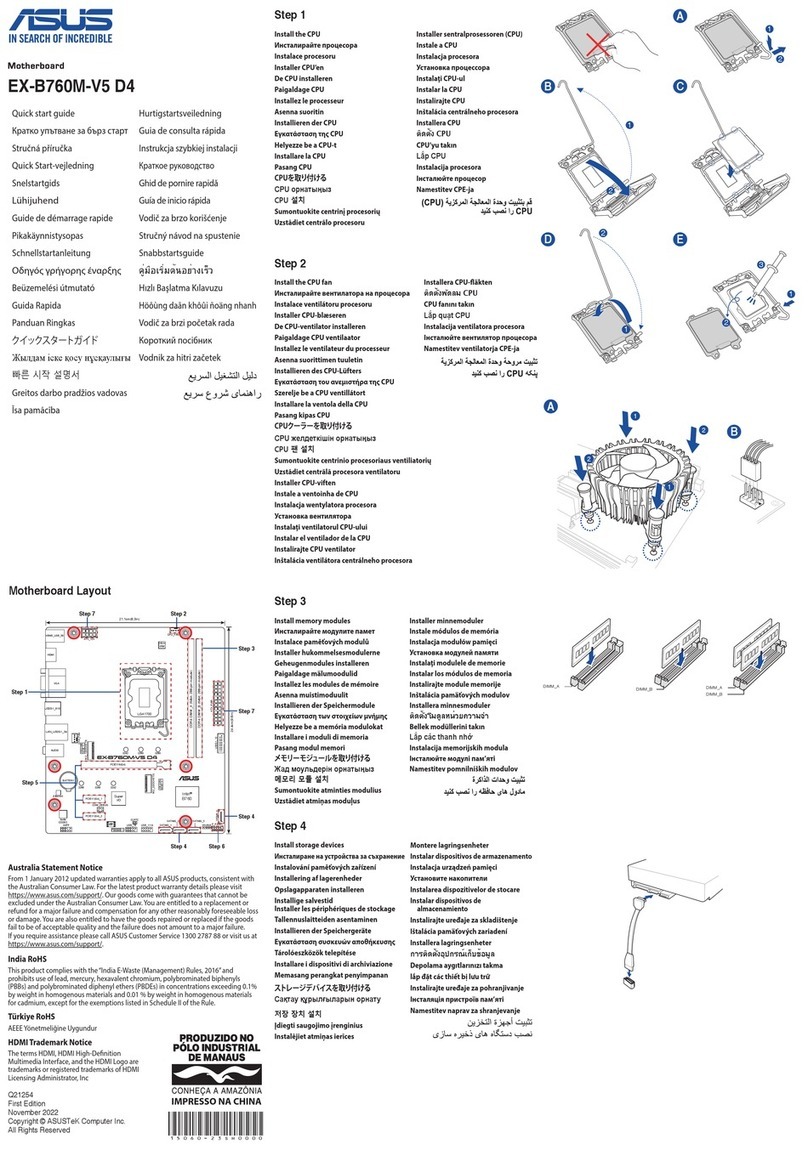
6.3 Embedded STLINK-V3E
The STLINK-V3E programming and debugging tool is integrated on the STM32H7x7I-EVAL Evaluation board.
The key STLINK-V3E features are the following:
• Standalone probe with modular extensions
• Self-powered through a USB connector (Micro-B)
• USB 2.0 high-speed compatible interface
• Direct firmware update support (DFU)
• JTAG/serial wire debugging (SWD) specific features:
– 3 to 3.6 V application voltage support and 5 V tolerant inputs
– Flat cables STDC14 to MIPI10 / STDC14 / MIPI20 (connectors with 1.27 mm pitch)
– JTAG communication support
– SWD and serial wire viewer (SWV) communication support
• Virtual COM port (VCP) specific features:
– 3 to 3.6 V application voltage support on the UART interface and 5 V tolerant inputs
– VCP frequency up to 15 MHz
– Available on STDC14 debug connector (not available on MIPI10)
• Multipath bridge USB to SPI/UART/I2C/CAN/GPIOs specific features:
– 3 to 3.6 V application voltage support and 5 V tolerant inputs
– Signals available on adapter board only (MB1440)
• Drag-and-drop Flash programming
• Two color LEDs: communication, power
Refer to http://www.st.com for details about STLINK-V3E.
Note: It is possible to power the Evaluation board through CN23 (Embedded STLINK/V3E USB connector) even if an
external tool is connected to CN8 (ETM Trace connector) or CN9 (External JTAG and SWD connector).
ETM can only work at 50 MHz clock by default because ETM signals are shared with other peripherals. If better
performance of ETM is required (84 MHz/98 MHz), R217, R230, R231, R234, R236, SB2, SB5, SB8, SB11,
SB42, SB57 must be removed to reduce the stub on ETM signals. In this configuration SAI and PDM are not
functional and NOR Flash and the address of SRAM are limited on A18.
ETM trace function would be abnormal as SAI_SDB share the same pins with TRACE_D0, and TRACE_D0
would be forced high by SAI_SDB. When using ETM trace it is necessary to set ADCDAT1 pin (SAI_SDB signal
of the STM32) of audio codec WM8994ECS/R (U22) by software to be tri-state.
6.3.1 Drivers and firmware upgrade
The STLINK-V3E requires drivers to be installed on Windows®. It embeds a firmware which needs to be updated
from time to time to benefit from new functionalities and bug corrections. Refer to technical note "Overview of ST-
LINK derivated" (TN1235) for details.
6.4 Power supply
The STM32H7x7I-EVAL Evaluation board is designed to be powered by 5 V DC power supply and is protected by
PolyZen from wrong power plug-in events. It is possible to configure the Evaluation board to use any of the
following six sources for the power supply:
• 5 V DC power adapter connected to CN10, the power jack on the board (Power Supply Unit on silk screen of
JP10 (PSU)).
• 5 V DC power with 500 mA limitation from CN23, the USB Micro-B connector of STLINK-V3E (USB 5 V
power source on silkscreen of JP10 (STlk)). If the USB enumeration succeeds (as explained below), the ST-
LINK U5V power is enabled, by asserting the PWR_EN pin. This pin is connected to a power switch (ST890)
that powers the board. This power switch features also a current limitation to protect the PC in case of short-
circuit on the board. If overcurrent (more than 600 mA) happens on the board, the LED LD11 lights up.
• 5 V DC power with 500 mA limitation from CN14, the USB OTG1_HS Micro-AB connector (USB 5V power
source on silkscreen of JP10 (HS)).
UM2525
Embedded STLINK-V3E
UM2525 - Rev 3 page 10/69
